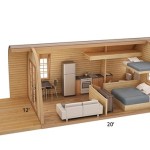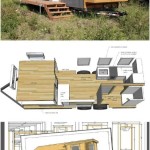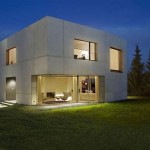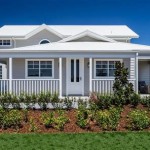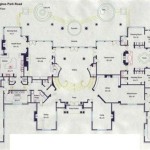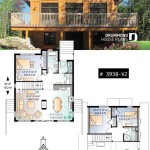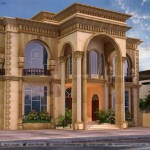House Plans With Sunroom On Front: Integrating Light and Living
The integration of a sunroom into the architectural design of a house, particularly when positioned at the front, represents a significant enhancement in both aesthetic appeal and functional living space. House plans incorporating a front-facing sunroom offer a unique opportunity to maximize natural light exposure, create a welcoming entry, and seamlessly blend indoor and outdoor environments. This article will explore various aspects of house plans featuring a front sunroom, encompassing design considerations, benefits, structural elements, material choices, and potential challenges.
Design Considerations for Front Sunrooms
The design of a front sunroom requires careful consideration of several factors to ensure its integration harmonizes with the overall architectural style of the house and meets the specific needs of the occupants. Key elements to consider include the size and shape of the sunroom, its orientation in relation to the sun, its accessibility from other areas of the house, and the intended use of the space.
The size and shape of the sunroom should be proportionate to the house and the available lot space. A sunroom that is too large may overwhelm the front facade, while one that is too small may not provide adequate usable space. Common shapes for front sunrooms include rectangular, square, and curved designs. The choice of shape will depend on the architectural style of the house and the desired aesthetic effect.
Orientation plays a crucial role in determining the amount of sunlight the sunroom receives. A south-facing sunroom will receive the most sunlight throughout the day, which can be beneficial in colder climates but may require shading measures in warmer climates. East-facing sunrooms receive morning sun, while west-facing sunrooms receive afternoon sun. The optimal orientation will depend on the local climate and the user's preference for sunlight exposure.
Accessibility is another important consideration. The sunroom should be easily accessible from other areas of the house, such as the living room, dining room, or kitchen. This can be achieved through doorways, archways, or open floor plans. The placement of doors and windows should also be carefully planned to maximize natural light and ventilation.
The intended use of the sunroom will influence its design and layout. A sunroom intended for relaxation and leisure may feature comfortable seating, soft lighting, and calming décor. A sunroom intended for dining or entertaining may include a dining table, chairs, and a serving area. A sunroom intended for gardening may feature potted plants, shelving, and a water source.
Benefits of Incorporating a Front Sunroom
The addition of a sunroom to the front of a house offers a multitude of benefits, enhancing both the aesthetic appeal and the functional living space. These benefits range from increased natural light and energy efficiency to enhanced curb appeal and improved property value.
Maximizing natural light exposure is a primary benefit. A front sunroom, with its large windows and glass roof, allows ample sunlight to penetrate the interior space, reducing the need for artificial lighting and creating a bright and cheerful atmosphere. Natural light is known to improve mood, reduce stress, and enhance overall well-being.
Front sunrooms can contribute to energy efficiency. During the colder months, the sunroom can act as a passive solar collector, trapping heat from the sun and reducing the need for heating. During the warmer months, proper ventilation and shading can prevent the sunroom from overheating, reducing the need for air conditioning. The thermal mass of the sunroom can also help to regulate temperature fluctuations.
A front sunroom enhances curb appeal and adds architectural interest to the house. A well-designed sunroom can significantly improve the overall appearance of the house, making it more attractive and inviting. The addition of a sunroom can also increase the property value, as it adds usable living space and enhances the overall aesthetic appeal.
Sunrooms can provide a transition space between the indoors and outdoors, allowing occupants to enjoy the benefits of both environments. The sunroom can serve as a buffer zone, protecting the interior of the house from the elements while providing a comfortable space to relax and enjoy the scenery. This is particularly valuable in regions with harsh weather conditions.
A front sunroom can serve as a versatile living space, adaptable to a variety of uses. It can be used as a living room, dining room, office, playroom, or garden room. The flexibility of the space allows occupants to customize it to their specific needs and preferences.
Structural Elements and Material Choices
The structural integrity and longevity of a front sunroom depend on the careful selection of materials and the implementation of sound construction practices. The choice of materials should consider the local climate, the architectural style of the house, and the desired aesthetic effect. Key structural elements include the foundation, framing, glazing, and roofing.
The foundation provides a stable base for the sunroom and should be designed to withstand the weight of the structure and the forces of nature. Common foundation types include concrete slabs, piers, and crawl spaces. The choice of foundation type will depend on the soil conditions and the local building codes.
The framing provides the skeletal structure of the sunroom and supports the glazing and roofing. Common framing materials include wood, aluminum, and vinyl. Wood framing is aesthetically pleasing and can be easily customized, but it requires regular maintenance to prevent rot and insect damage. Aluminum framing is durable and low-maintenance, but it can be more expensive than wood. Vinyl framing is also durable and low-maintenance, but it may not be as aesthetically appealing as wood or aluminum.
The glazing, or glass, is a critical component of a sunroom, as it determines the amount of sunlight that enters the space and the level of insulation. Common glazing options include single-pane glass, double-pane glass, and triple-pane glass. Double-pane glass is generally recommended for sunrooms, as it provides better insulation than single-pane glass. Low-E (low-emissivity) coatings can be applied to the glass to reduce heat gain in the summer and heat loss in the winter. Tinted glass can also be used to reduce glare and heat gain.
The roofing provides protection from the elements and contributes to the overall aesthetic appeal of the sunroom. Common roofing materials include glass, polycarbonate, and shingles. Glass roofing allows maximum sunlight to enter the space but can also lead to excessive heat gain in the summer. Polycarbonate roofing is lightweight and durable, but it may not be as aesthetically pleasing as glass. Shingle roofing provides good insulation and protection from the elements, but it blocks some of the sunlight.
In addition to the structural elements, other material choices will impact the look and feel of the sunroom. Flooring options include tile, hardwood, and carpet. Tile is durable and easy to clean, making it a good choice for sunrooms that are exposed to the elements. Hardwood flooring adds warmth and elegance to the space. Carpet is comfortable and provides good insulation, but it may be more susceptible to moisture damage.
Interior finishes, such as paint, wallpaper, and trim, can be used to customize the look and feel of the sunroom. Light colors will reflect sunlight and make the space feel brighter and more spacious. Dark colors will absorb sunlight and make the space feel warmer and cozier. The choice of interior finishes should complement the architectural style of the house and the desired aesthetic effect.

House Plans With Sunrooms Or 4 Season Rooms

House Plans With Sunrooms Or 4 Season Rooms

House Plans With Solarium Or Sun Room Drummond

Craftsman House With 4 Bedrooms Outdoor Living And A Nook Plan 4746

House Plans With Solarium Or Sun Room Drummond

Sitting And Sun Rooms 35030gh Architectural Designs House Plans

3 Bedroom Country Home Plan With Sunroom

House Plans With Sunrooms Or 4 Season Rooms

Beautiful 3 Bed Colonial Farmhouse Plan With Sunroom 23779jd Architectural Designs House Plans

House Plans With Solarium Or Sun Room Drummond

